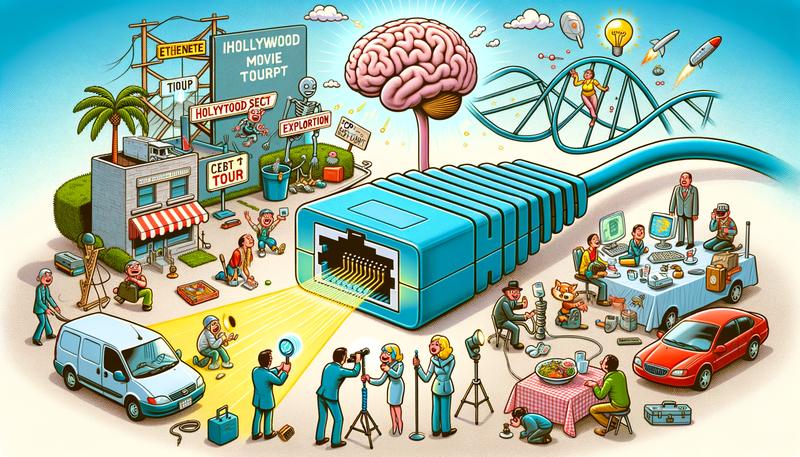I recently explored the cheapest 2.5-Gigabit USB Ethernet adapters and found them impressive. Join me as I dive into the world of design docs, unwrap Hollywood studio tours, and share my struggles with finishing projects. Plus, I’ll spotlight the post-Covid pop-up restaurant boom, discover life’s ancestor, and review a novel approach to early Alzheimer’s detection.
- I Bought The Cheapest 2.5-Gigabit USB Ethernet Adapters And They Are Awesome!: I very nearly typed “so you don’t have to” as the end of this blog post’s title, but that wouldn’t be the least bit …
- Intel Honesty: The best way to both save Intel and have leading edge manufacturing in the U.S. is to split the company, and for the U.S. government to pick up the bill via purchase guarantees.
- Reasons to write design docs: Writing is useful at all levels of software engineering. It’s not just something for tech leads, architects, and principal engineers. We write all the time, whether it’s comments in code, descriptions in Jira, messages in Slack, or design documents in a wiki. We don’t do this because it’s fun; most engineers I’ve met don’t love writing1. We do it because it’s useful.
- The Art of Finishing: My endless battle with the “Project Hydra”: why I can’t seem to finish projects, and the strategies I’m exploring to finally complete what I start. A personal journey through productivity’s thorniest challenge.
- Why “pop-up” restaurants are everywhere now: The post-Covid pop-up boom, explained.
- Scientists Reveal How They Identified The Ancestor of All Life on Earth: Understanding how life began and evolved on Earth is a question that has fascinated humans for a long time, and modern scientists have made great advances when it comes to finding some answers.
- A look at the behind-the-scenes business of Hollywood studio lot tours: Universal, Warner Bros., Sony and Paramount use tours to show off the movie-making process from set design and sound recording to costumes and props.
- Toward Robust Early Detection of Alzheimer’s Disease via an Integrated Multimodal Learning Approach: Alzheimer’s Disease (AD) is a complex neurodegenerative disorder marked by memory loss, executive dysfunction, and personality changes. Early diagnosis is challenging due to subtle symptoms and varied presentations, often leading to misdiagnosis with traditional unimodal diagnostic methods due to their limited scope. This study introduces an advanced multimodal classification model that integrates clinical, cognitive, neuroimaging, and EEG data to enhance diagnostic accuracy. The model incorporates a feature tagger with a tabular data coding architecture and utilizes the TimesBlock module to capture intricate temporal patterns in Electroencephalograms (EEG) data. By employing Cross-modal Attention Aggregation module, the model effectively fuses Magnetic Resonance Imaging (MRI) spatial information with EEG temporal data, significantly improving the distinction between AD, Mild Cognitive Impairment, and Normal Cognition. Simultaneously, we have constructed the first AD classification dataset that includes three modalities: EEG, MRI, and tabular data. Our innovative approach aims to facilitate early diagnosis and intervention, potentially slowing the progression of AD. The source code and our private ADMC dataset are available at https://github.com/JustlfC03/MSTNet.
